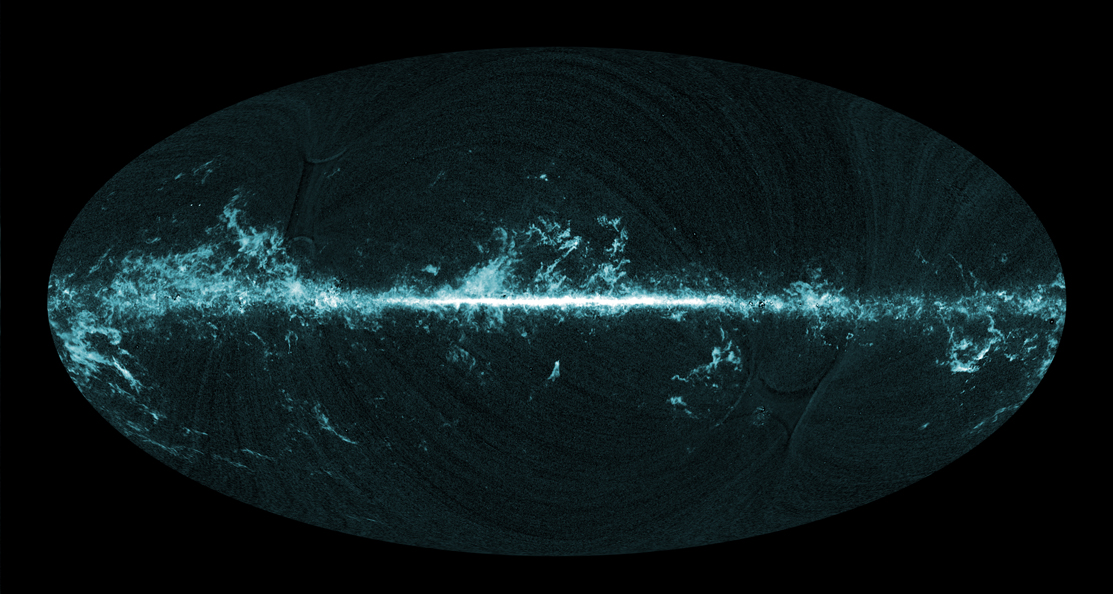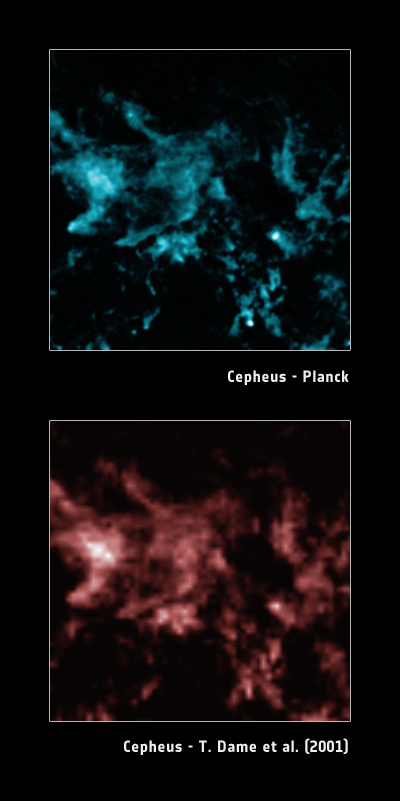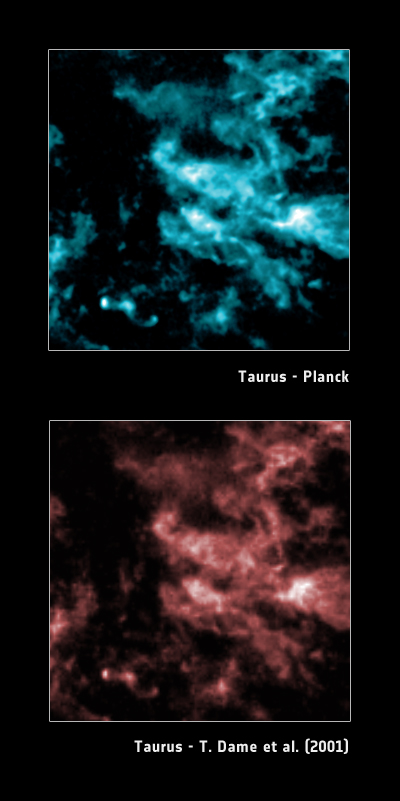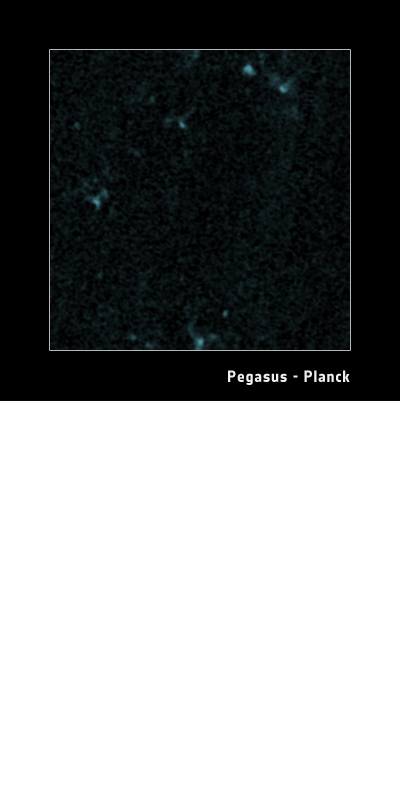| Basic Information | |
| What is this? | A map of carbon monoxide in our Galaxy |
| Where is it in the sky? | Carbon monoxide tends to be located in the plane of our Galaxy, but has now been found in more locations |
| How big is it? | The image above shows the entire sky, with the disc of our Galaxy across the centre |
| How far away is it? | Most of the carbon monoxide is thousands of light years away, though some of the closer regions are probably much closer |
| What do the colours represent? | The brighter colours show a higher density of carbon monoxide. The faint stripes across the image are due to the way in which Planck scans the sky, combined with the map is made. |
Downloads
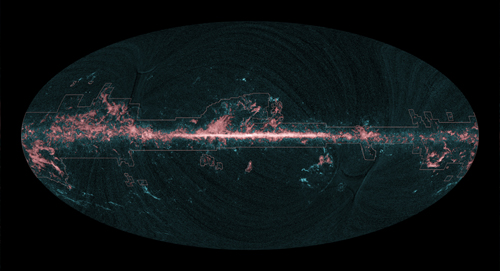
Clouds of cold gas are mostly made of molecules of hydrogen. This molecular hydrogen is very hard to detect as it doesn’t emit much light. However, the gas clouds also contain smaller amounts of other molecules which emit light more readily. One such molecule, carbon monoxide, emits light at frequencies which are measured by Planck’s High Frequency Instrument. These cold gas clouds mark locations where stars are likely to be forming. The way in which Planck surveys the sky, combined with the process of extraction of the carbon monoxide emission, leaves stripes across the map, which are visible in the image above.
Carbon monoxide has been detected by previous ground-based experiments, but such experiments are very time consuming and only cover limited areas of the sky, primarily in the plane of our Galaxy. Planck, meanwhile, surveys the whole sky, and so can pick out carbon monoxide in previously unknown locations. A comparison of the Planck carbon monoxide map with that from a previous survey is shown on the right.
While Planck has seen more detail in some known location, such as in the constellations of Cepheus and Taurus, it has also picked out small clouds in locations such as the constellation of Pegasus, shown below. These regions can now be investigated in much more detail by other telescope, both on the ground and in space.
